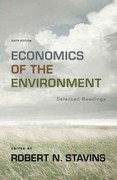Question
Attach screenshot of graph from FRED data base:https://fred.stlouisfed.org Asyou know, my objective is to prepare you for to be able to think critically about macroeconomic
Attach screenshot of graph from FRED data base:https://fred.stlouisfed.org
Asyou know, my objective is to prepare you for to be able to think critically about macroeconomic issues for the rest of your lives.What's the best way to measure that?Discussion Board 8 with a FRED graph.As you'll see, this is a topic most apropos for your final day of macroeconomics.So instead of rehashing something we've already discussed, you can learn and apply concepts to something new.Hence, "evaluation"!
First, read the following paragraphs about the Fed's new average inflation targeting policy.
Since 1996, it has been understood among Fed policymakers that the (undeclared) target for inflation was around 2%. In January 2012, Chairman Ben Bernanke made thisimplicitinflation targetexplicitand official, thereby aligning the Fed's inflation target with that of all the major central banks. In this framework, when inflation has approached or exceeded the traditional 2% target, even temporarily as it did in 2018, the FOMC has responded by raising the baseline federal funds rate to combat rising prices.
In August 2020 atthe online Jackson Hole conference, Chair Jay Powell announced a revision to the Fed's long-run monetary policy framework by re-framing this goal as anaverageinflation target (AIT) of 2% over the long-run. With this new framework, the FOMC is communicating that it will tolerate inflation above its target for a period of time to offset periods when inflation was below its target. In other words, the FOMC is targetingaverageinflation of 2% in the long run.
So, what does past inflation data say about the feasibility of the new AIT?Create FRED graph that plots two lines of data points over the past 25 years:
(i)the FOMC's preferred inflation measure, the core personal consumption expenditures index (core PCE), in blue and
(ii)the 2% target in red.
First, in FRED, search for and select "Personal Consumption Expenditures Excluding Food and Energy (Chain-Type Index) monthly, seasonally adjusted," which will be your line 1.Select the time period January 1995 to the latest month available in 2021.Then select "Percent Change from a Year Ago" as the units.
Next, use the "Add Line" tab to search for and select the same series, which is now your line 2. (Make sure your graph shows the time period January 1995 to the latest month available in 2021.)In the formula box, amend this series(your line 2)"a" by typing in "a*2/a", which results in a horizontal line of 2% for the target.You should now have a finished graph.
(a)Attach Graph
Step by Step Solution
There are 3 Steps involved in it
Step: 1

Get Instant Access to Expert-Tailored Solutions
See step-by-step solutions with expert insights and AI powered tools for academic success
Step: 2

Step: 3

Ace Your Homework with AI
Get the answers you need in no time with our AI-driven, step-by-step assistance
Get Started


